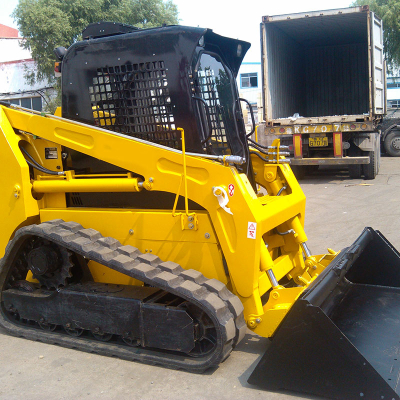How Does an Electric Forklift Work? The Complete Breakdown
As a leading forklift manufacturer, we often hear customers ask, "How do electric forks work?" Unlike diesel and LPG/gas forklifts, electric forks are powered by electricity. Understanding how electric forklifts work is crucial to our purchasing decisions.
In this article, we'll demystify the operation of electric forklifts by discussing their key components and how they work seamlessly together.
The Core Components of an Electric Forklift
To understand how an electric forklift works, let's first look at its essential parts:
1.Electric Motor(s): The heart of the machine. Most electric forklifts have at least two motors:
Drive Motor: Powers the wheels for movement.
Hydraulic Pump Motor: Powers the hydraulic system to lift and tilt the mast and forks.
2.Battery: The powerhouse. Typically a large, heavy lead-acid or lithium-ion battery that stores all the electrical energy needed for operation.
3.Controller: The brain. This electronic unit regulates the power flow from the battery to the motors. The operator's controls (accelerator, lift/lower levers) send signals to the controller, which then delivers the precise amount of power needed for smooth operation.
4.Hydraulic System: The muscle. Comprising a hydraulic pump, cylinders, and fluid, this system converts the electrical energy from the hydraulic motor into the powerful mechanical force required for lifting heavy loads.
The Step-by-Step Working Process
Now, let's connect these components to see how an electric forklift works in action:
Step 1: Powering Up
The operator inserts the key and turns it on. This action activates the electrical circuit, drawing power from the battery and sending it to the controller and the dashboard.
Step 2: Movement (Traction)
When the operator presses the accelerator pedal, a signal is sent to the controller. The controller interprets this signal and delivers a controlled amount of electrical current from the battery to the drive motor. This motor then turns the wheels, propelling the forklift forward or backward. The controller's role is crucial here—it ensures smooth acceleration and deceleration, preventing jerky movements.
Step 3: Lifting and Lowering Loads
This is where the hydraulic system comes into play. When the operator pulls the "lift" lever, it signals the controller. The controller then sends power to the hydraulic pump motor. This motor drives the hydraulic pump, which pressurizes the hydraulic fluid.
The pressurized fluid is forced into the lift cylinders, causing the piston rods to extend. This action pushes the mast upward, lifting the forks and the load. To lower the load, the operator moves the lever, which signals the controller to release the pressure in a controlled manner, allowing the forks to descend safely.
Step 4: Tilting the Mast
The tilting function works on a similar principle. Operating the "tilt" lever activates a different set of tilt cylinders via the same hydraulic pump. This allows the operator to tilt the mast forward or backward to secure the load during transport.
Key Advantages of the Electric Forklift System
Understanding how an electric forklift works also highlights its significant benefits:
Zero Emissions: Since they run on electricity, they produce no harmful exhaust fumes, making them perfectly safe for indoor use in warehouses, food processing plants, and pharmaceutical facilities.
Lower Operating Costs: Electricity is generally cheaper than fossil fuels. Additionally, electric motors have fewer moving parts, leading to reduced maintenance costs for parts like spark plugs, oil filters, and belts.
Quieter Operation: The electric motor operates much more quietly than a combustion engine, contributing to a better working environment.
Energy Efficiency: Electric forklifts are highly efficient, especially with regenerative braking systems that recharge the battery slightly during deceleration and braking.
Electric Forklift Battery: Power Source and Care
The battery is the lifeblood of an electric forklift. Proper care is essential for longevity and performance.
Charging: Always use the correct charger in a well-ventilated area.
Watering: For lead-acid batteries, regularly check and top up with distilled water as needed.
Changing: Establish a battery changing routine for multi-shift operations to minimize downtime.
Conclusion: A Smart, Sustainable Choice
So, how does an electric forklift work? In summary, it's a brilliantly efficient system where the battery provides power, the controller intelligently manages it, and the electric motors convert it into motion and lifting force.
This clean and efficient technology offers a compelling return on investment for businesses looking to improve their operational efficiency and sustainability.
Ready to Power Your Operations with wogong?
Now that you understand how an electric forklift works, it's time to experience the difference a high-quality machine can make. At wogong, we specialize in manufacturing durable, high-performance electric forklifts designed for your specific needs.
Explore our range of electric forklift solutions today and contact us for a quote!





